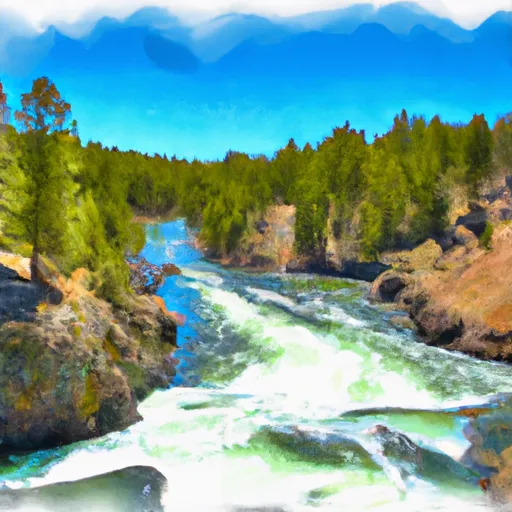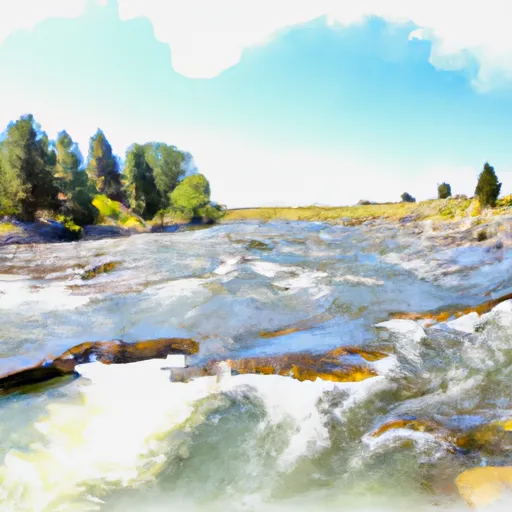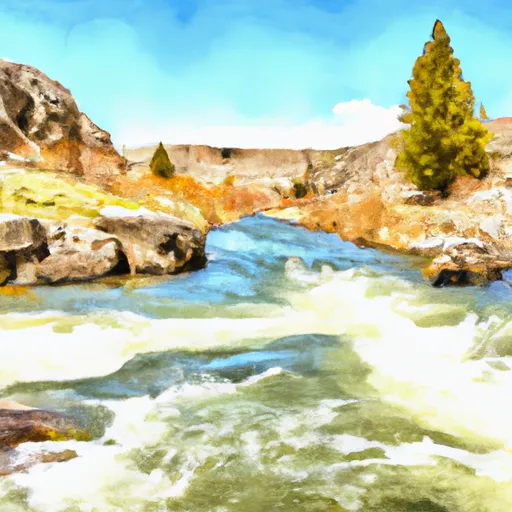Summary
Total streamflow across the
Yellowstone River
was last observed at
6,210
cfs, and is expected to yield approximately
12,317
acre-ft of water today; about 69%
of normal.
River levels are low and may signify a drought.
Average streamflow for this time of year is
9,064 cfs,
with recent peaks last observed
on
2011-05-25 when daily discharge volume was observed at
448,060 cfs.
Maximum discharge along the river is currently at the
Yellowstone River At Miles City Mt
reporting a streamflow rate of 8,100 cfs.
However, the streamgauge with the highest stage along the river is the
Yellowstone River At Glendive Mt
with a gauge stage of 48.55 ft.
This river is monitored from 9 different streamgauging stations along the Yellowstone River, the highest being situated at an altitude of 7,731 ft, the
Yellowstone River At Yellowstone Lk Outlet Ynp.
River Details
| Last Updated | 2025-12-29 |
| Discharge Volume | 12,317 ACRE-FT |
| Streamflow |
6,210.0 cfs
-918.0 cfs (-12.88%) |
| Percent of Normal | 68.52% |
| Maximum |
448,060.0 cfs
2011-05-25 |
| Seasonal Avg | 9,064 cfs |
River Streamflow Levels
| Streamgauge | Streamflow | Gauge Stage | 24hr Change (%) | % Normal | Minimum (cfs) | Maximum (cfs) | Air Temp | Elevation |
|---|---|---|---|---|---|---|---|---|
|
Yellowstone River At Yellowstone Lk Outlet Ynp
USGS 06186500 |
484 cfs | 2.52 ft | -2.81 | |||||
|
Yellowstone River Near Altonah
USGS 09292500 |
51 cfs | 0.88 ft | -4.72 | |||||
|
Yellowstone River At Corwin Springs Mt
USGS 06191500 |
776 cfs | 0.83 ft | -29.45 | |||||
|
Yellowstone River Near Livingston Mt
USGS 06192500 |
1380 cfs | 0.13 ft | -15.34 | |||||
|
Yellowstone River At Billings Mt
USGS 06214500 |
3570 cfs | 3.02 ft | -8.46 | |||||
|
Yellowstone River At Forsyth Mt
USGS 06295000 |
5430 cfs | 2.23 ft | 0.56 | |||||
|
Yellowstone River At Miles City Mt
USGS 06309000 |
8100 cfs | 3.51 ft | -21.36 | |||||
|
Yellowstone River At Glendive Mt
USGS 06327500 |
6000 cfs | 48.55 ft | -1.96 | |||||
|
Yellowstone River Near Sidney Mt
USGS 06329500 |
6130 cfs | 6.85 ft | -8.51 |
Seasonal Discharge Comparison
Maximum Streamflow Discharge
Streamflow Elevation Profile
The Yellowstone River is a tributary of the Missouri River, approximately 692 miles (1,114 km) long, in the western United States. Considered the principal tributary of the upper Missouri, the river and its tributaries drain a wide area stretching from the Rocky Mountains in the vicinity of Yellowstone National Park across the mountains and high plains of southern Montana and northern Wyoming.
Regional Streamflow Levels
21
Cubic Feet Per Second
92
Cubic Feet Per Second
276
Cubic Feet Per Second
776
Cubic Feet Per Second
River Runs
-
 Begins Downstream Of Osprey Falls To Confluence With Yellowstone River, At The Northern Park Boundary
Begins Downstream Of Osprey Falls To Confluence With Yellowstone River, At The Northern Park Boundary
-
 Gardiner Town Run
Gardiner Town Run
-
 Begins 1/4 Mile Downstream From Northeast Entrance Road Bridge In The Area Of Tower Falls/ Roosevelt To Northern Park Boundary
Begins 1/4 Mile Downstream From Northeast Entrance Road Bridge In The Area Of Tower Falls/ Roosevelt To Northern Park Boundary
-
 Begins 1/4 Mile Upstream From Northeast Entrance Road Bridge In The Area Of Tower Falls/ Roosevelt To Ends 1/4 Mile Downstream From Northeast Entrance Road Bridge In The Area Of Tower Falls/ Roosevelt
Begins 1/4 Mile Upstream From Northeast Entrance Road Bridge In The Area Of Tower Falls/ Roosevelt To Ends 1/4 Mile Downstream From Northeast Entrance Road Bridge In The Area Of Tower Falls/ Roosevelt
